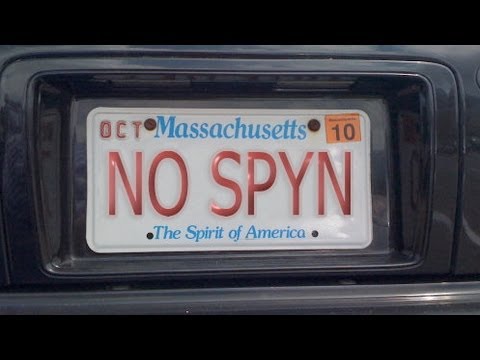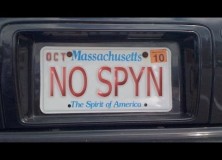 With the City of Easton announcing the use of license plate readers I try to keep watch for stories that demonstrate the dangers of relying on technology and the loss of privacy. What follows are a few examples. The first one involving a driver, Denise Green, should have Mayor Panto ensuring that there is a policy that addresses the possibility of an incorrect read.
With the City of Easton announcing the use of license plate readers I try to keep watch for stories that demonstrate the dangers of relying on technology and the loss of privacy. What follows are a few examples. The first one involving a driver, Denise Green, should have Mayor Panto ensuring that there is a policy that addresses the possibility of an incorrect read.
Mayor Panto should also disclose to the public information regarding the data collected by the scanners. Specifically, if it is sold by the company controlling the system, where it is stored, and for how long the collected data is kept on file before it is erased (that is, if it is erased).
The Bad Scanner Read
A California woman who was pulled over, handcuffed, and forced to kneel while at least four police officers pointed guns at her can sue the police department over their erroneous license plate reader result, a US federal judge ruled Monday.
Denise Green, who works for San Francisco as a municipal driver, first sued the police department for wrongful detention and excessive force after she was accosted in the March 2009 incident. US District Judge Richard Seeborg initially dismissed her suit, asserting that the police reasonably believed Green was a suspected car thief because of the information transmitted on a vehicle-mounted license plate reader.
The Ninth Circuit Court of Appeals felt otherwise, ruling that a jury should decide the case in no small part because the license plate read by the electronic reader was for “a car with a different make, model and color” than the 1992 Lexus ES300 that Green, a 45-year-old African American, was operating.
“A rational jury could find that (the officers and the city) violated Green’s fourth Amendment rights” prohibiting search and seizure, the court ruled unanimously, as quoted by the San Francisco Chronicle.
The license plate number on Green’s Lexus differed by only one digit from a truck that had been reported stolen. Officer Alberto Esparza admitted he was unable to see her plate or read the photo his camera captured, calling in to the police dispatch to verify that the number picked up was the same as the stolen vehicle.
Between four and six officers responded when the number was wrongly verified. Green was ordered out of her car, patted down, and placed in handcuffs for an estimated 10 minutes while the police combed through her vehicle. It was only when they scanned her true license plate number that the mistake was revealed.
To Catch A Non-Thief
Last month in Prairie Village, Kansas, a man named Mark Molner was wrongfully identified as a car thief and boxed in by at least two police vehicles. Molner told the Prairie Village Post that his wife looked on from another vehicle as an officer walked up to his BMW with a weapon drawn.
“He did not point it at me, but it was definitely out of the holster,” Molner said of the gun. “I am guessing that he saw the shock and horror on my face, and realized that I was unlikely to make a scene.”
The same camera that records a license plate number also tracks the time, date and location while storing that information. Different police agencies keep the data stored for different amounts of time, whether it be days, weeks, or years.
Big Brother Is Watching
Two years ago a Minneapolis Star Tribune reporter filed a request for his own license plate data records under the state’s open records law. The Minneapolis Police Department turned over an extensive list of dates and times indicating that on any given day over the course of a year the reporter’s car may have been filmed seven times.
“The technology that would make ‘1984’ possible in real life exists now,” Chuck Samuelson, executive director of the Minnesota American Civil Liberties Union, told the paper. “But the infrastructure to protect individuals’ privacies and rights doesn’t exist, particularly on the legislative and judicial side.”
Disclaimer: On January 4, 2016, the owner of WestEastonPA.com began serving on the West Easton Council following an election. Postings and all content found on this website are the opinions of Matthew A. Dees and may not necessarily represent the opinion of the governing body for The Borough of West Easton.







